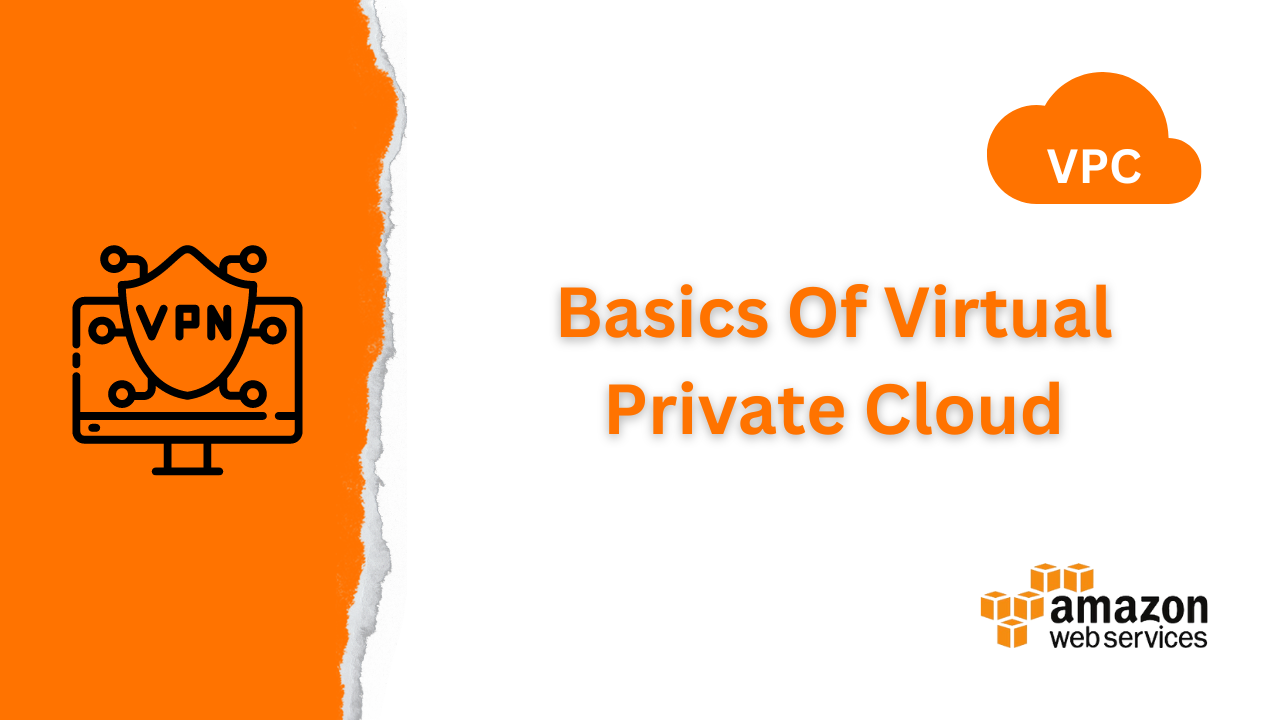Understanding the Basics of Virtual Private Cloud (VPC)
 Kelvin Parmar
Kelvin Parmar
Introduction
In the rapidly evolving landscape of cloud computing, Virtual Private Cloud (VPC) has emerged as a crucial component for businesses looking to harness the power of the cloud while maintaining control over their network environment. In this blog post, we'll explore the fundamental concepts of VPC, its benefits, and how it plays a pivotal role in modern cloud architectures.
What is a Virtual Private Cloud (VPC)?
A Virtual Private Cloud (VPC) is a virtual network dedicated to your cloud account within a public cloud provider's infrastructure, such as Amazon Web Services (AWS), Microsoft Azure, or Google Cloud Platform (GCP). Essentially, it allows you to create a logically isolated section of the cloud where you can launch resources like virtual machines, databases, and storage in a virtual network that you define.
Let's understand with Story:
In a village, a wise individual named ABC identified an opportunity to cater to lazy residents who were unwilling to construct and manage their homes. ABC acquired a vast land in the village and offered to build houses for these lazy individuals, taking care of maintenance in exchange for payment. As the demand increased, some residents expressed concern about security and privacy issues arising from the proximity of the houses. In response, ABC introduced a new concept called "secure land," constructing gated communities within the acquired land. Each secure property had a gate acting as a gateway, ensuring only authorized individuals could access it. This innovative solution addressed the security concerns and allowed ABC to expand its business by constructing multiple secure properties, demonstrating how adaptability and creative problem-solving can lead to successful ventures.
Transform into AWS VPC :

In the context of AWS, the analogy of the wise person ABC and the lazy villagers relates to how AWS addressed the security concerns of companies hosting their applications in its data centers. AWS, acting as the wise person, recognized the need for secure hosting solutions. Initially, AWS provided virtual machines (EC2 instances) to companies, but security issues arose as all instances were hosted on the same physical servers, creating a vulnerability. To address this, AWS introduced the concept of a Virtual Private Cloud (VPC), analogous to the secure land in the village story. A VPC allows companies to create isolated and secure environments within the AWS data center, mitigating the risk of security breaches. This shift empowered AWS DevOps engineers to configure and maintain the VPC, offering a more robust and secure infrastructure for hosting applications.
Key Components of VPC:
Subnets:
Subnets are segments of the IP address range of your VPC. They play a crucial role in organizing and securing resources within the VPC. Each subnet can be associated with an availability zone, providing high availability and fault tolerance.
Route Tables:
Route tables define how traffic is directed within the VPC. They contain a set of rules, called routes, that determine where network traffic is directed.
Security Groups and Network Access Control Lists (NACLs):
Security Groups and NACLs act as virtual firewalls, controlling inbound and outbound traffic at the instance and subnet levels, respectively. Security Groups operate at the instance level, while NACLs operate at the subnet level.
Internet Gateway:
An Internet Gateway allows resources within the VPC to connect to the Internet, enabling communication with external networks. It plays a crucial role in scenarios where resources need to access or be accessed from the internet.
Benefits of VPC:
Isolation and Security:
VPC provides logical isolation for resources, enhancing security by allowing you to define and control the network environment. Security Groups and NACLs add a layer of control, ensuring that only authorized traffic is allowed.
Customization and Flexibility:
VPCs are highly customizable, allowing you to define your IP address range, create multiple subnets, and configure routing tables according to your specific requirements. This flexibility enables the design of complex network architectures.
Scalability:
As your business grows, VPCs provide the scalability needed to accommodate increased workloads. You can easily add or remove resources within the virtual network to meet changing demands.
Cost Optimization:
VPCs contribute to cost optimization by allowing you to design and deploy resources efficiently. You can tailor your network architecture to meet performance needs while avoiding unnecessary expenses.
Use Cases for VPC:
Enterprise Applications:
VPCs are well-suited for hosting enterprise applications that require a secure and scalable network infrastructure. This includes databases, web servers, and application servers.
Hybrid Cloud Deployments:
VPCs play a crucial role in hybrid cloud scenarios where on-premises data centers are integrated with cloud resources. This allows businesses to maintain a seamless and secure network environment.
Multi-Tier Web Applications:
When deploying multi-tier web applications, VPCs enable the creation of isolated subnets for web servers, application servers, and databases. This segmentation enhances security and facilitates efficient resource management.
Conclusion:
In conclusion, Virtual Private Cloud (VPC) is a foundational element in cloud computing that empowers businesses to build scalable, secure, and customized network environments. By understanding the key components and benefits of VPC, organizations can leverage this technology to optimize their cloud infrastructure, foster innovation, and meet the evolving demands of the digital landscape. As cloud computing continues to evolve, VPC will remain a cornerstone in building resilient and efficient cloud architectures.
Certainly! If you found this content valuable, don't forget to like, follow me on Twitter LinkedIn Hashnode, and share it with others who might benefit from the information. Your support is greatly appreciated!
Subscribe to my newsletter
Read articles from Kelvin Parmar directly inside your inbox. Subscribe to the newsletter, and don't miss out.
Written by

Kelvin Parmar
Kelvin Parmar
I am B.tech Graduate who is Passionate about Tech and Open Source. Programmer with a good sense of design. Learning and sharing in Public and helping the tech communities. I write about my experiences, tech and tools. Educating and Helping people get into Tech and Open Source through my Content.